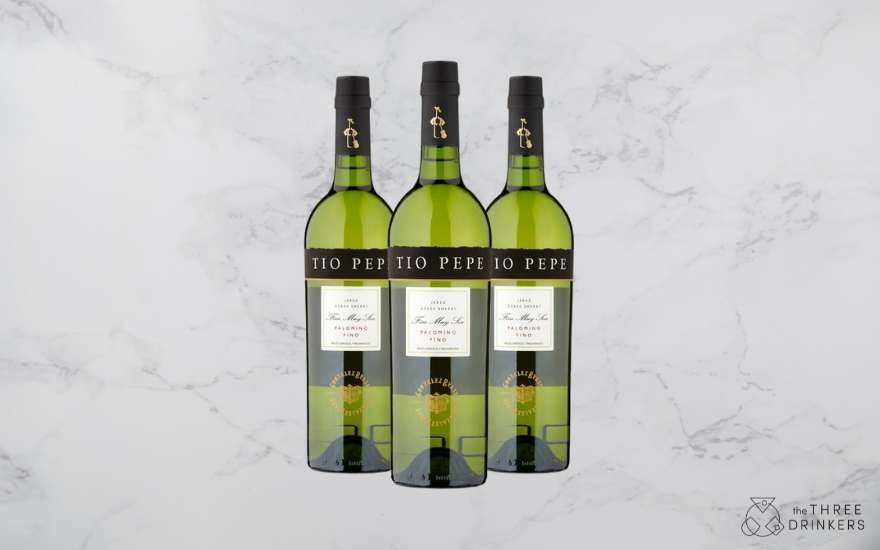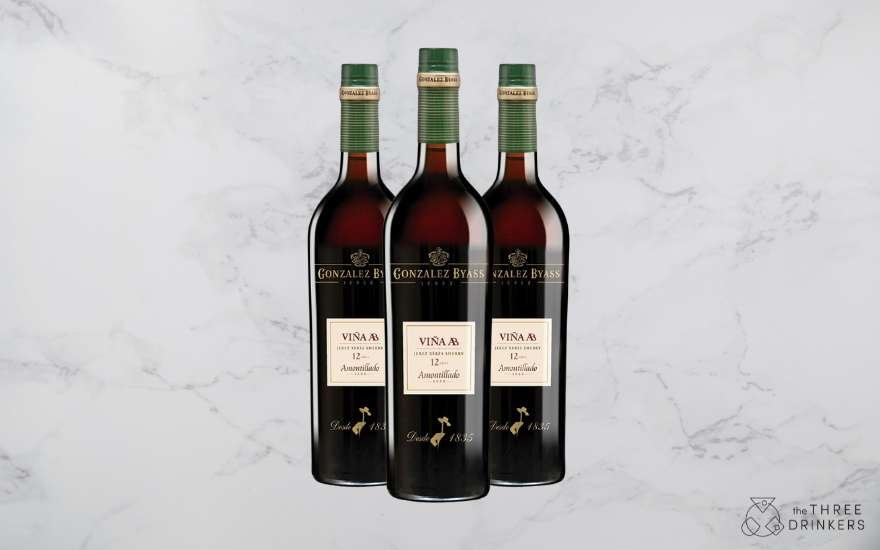It’s Sherry week, so what better time to get to know this misunderstood and underated tipple? Sherry lovers around the world have been banging the drum for these unique, moreishly saline, food friendly sippers for years and finally, the message is getting through: Sherry ‘proper’ is not sweet! Read that again. Here’s why it’s time to reacquaint ourselves with this liquid treasure from the sun-soaked vineyards of southern Spain.
Wine? Spirit? Liqueur? What exactly is Sherry?
In recent years, Sherry has experienced a renaissance, with younger generations discovering its charms and Sherry bars popping up in trendy neighbourhoods worldwide and restaurant lists boasting numerous offerings. But what is it exactly? In a nutshell, Sherry is a fortified wine that hails from a triangle of villages in Spain’s Andalusia and more often than not, it is bone dry. Yes, there are two types of sweet Sherry - naturally so or not so naturally so - but when wine lovers talk about authentic Sherry, it’s the dry stuff they mean.
It all starts with Palomino Fino grapes, which are grown around the city of Jerez de la Frontera in Andalusia. Being an ‘Old World’ (European, essentially) wine style, it takes its name from the place rather than the grapes and ‘Sherry’ is just a poor (in my opinion) English translation of ‘Jerez’. Wine is made by grapes here in the normal way, but just before fermentation ends, a splash of grape spirit is added to stop the process and fortify the wine. The historical reasons for doing this were many, but the key reason was to raise the wine’s alcohol content to make it less susceptible to spoilage, especially during transportation. After all, the Andalusian climate is warm and humid, so normal wine would go off very quickly in the days before air conditioning.
What makes the dry styles of Sherry unique?
It’s what happens once the wine is fortified and put into wooden barrels that the Sherry magic happens: A small amount of space is left as the liquid ages and the region’s humidity causes a thin layer of yeast called ‘flor’ to develop on the top of the wine, which helps protect it from being completely oxidised. Whether this flor layer remains intact or not and how long it remains then defines the final style of the Sherry inside the barrel. Here’s a rundown of the five, stunningly dry Sherry styles and a cheeky, naturally sweet one to try:
Manzanilla (15-17% abv typically)
Manzanilla is the seaside cousin of the famous Fino and has an unmistakable maritime vibe. It can only be made in the town of Sanlúcar de Barrameda and has a characteristic chamomile note (manzanilla is Spanish for chamomile). It also tends to be a touch lighter and more saline than Fino. Picture sipping the sea breeze captured in a bottle with a delightful, fresh bread yeastiness. Great with savoury snacks and salty cheeses.
Try: La Gitana Manzanilla, £9.75 from Tesco
Fino (15-17% abv typically)
Fino is a similarly pale and bone-dry style that's as crisp as a newly ironed shirt. Unlike Manzanilla, it can be produced in any of the three towns within the Sherry Triangle and has more of a roasted, salted almond note with hints of crunchy apple. A great aperitif that also loves salty snacks and can cut through fried food like a blade. It’s also awesome with tonic. Incidentally, the famously sweet ‘cream’ sherries that Granny loves are often Finos with added concentrated grape must or grape syrup.
Try: Tio Pepe Fino, £13 from Sainsbury’s, Morrisons
Amontillado (17-22% ABV typically)
While both Manzanilla and Fino are made with wines where the flor layer has stayed intact, Amontillado is what you get when flor is removed. Starting life as a Fino, it spends time ageing in barrels before having a slosh of brandy for fortification. This spirited wine then moves to a new barrel, where it begins its journey into oxidative ageing, resulting in a darker, amber colour with notes of roasted nuts, tobacco, spice and dried fruit, all the while keeping a tangy saltiness. Amontillado can also have a bit of PX (see below) added for sweetness.
Try: Gonzalez Byass Vina AB Amontillado £16.50 from Ocado
Oloroso (16-20% ABV typically)
Made deliberately without any flor from the start and subjected to extensive ageing, Oloroso is the darkest dry Sherry style and is full-bodied, concentrated and complex. Silky smooth and intensely nutty in character, it has wonderfully Christmassy notes of dried raisins, figs and salted caramel. Stunning alone but it also loves mature cheeses and can handle game too.
Try: No.1 Emilio Lustau Dry Oloroso, £13.49 from Waitrose
Palo Cortado (17-22% ABV typically)
Palo Cortado is the style to ask for in a bar if you want to show off your Sherry skills. Made often unintentionally when the flor layer naturally dies away on wines destined to be Fino or Amontillado, PC combines the dryness of Amontillado with the nuttiness and body of Oloroso. Think tangy, salted almonds, hazelnuts, dried fruits, toffee, and vanilla oak. It’s what the Sherry hipsters are drinking!
Try: Very Rare Palo Cortado, £8.49 for 37.5cl from M&S and Ocado
Something different:
Pedro Ximenez (PX)
PX, as it is affectionately known, is a sweet style of Sherry made with very ripe, white, Pedro Ximenez grapes, which are air dried on mats to concentrate sugars and flavours before being gently pressed. The lusciously sweet juice is then aged in barrels for a long time - sometimes decades, to achieve a thick, dark, treacley consistency and flavours of dried fig and baking spice. Stuff the chocolate sauce, pour this over your ice cream! Note: This is not the sweet ‘cream’ sherry beloved by elderly parents at Christmastime.
Try: The Best Pedro Ximenez, £7 for 37.5cl from Morrisons
Ultimately, there’s nothing at all wrong with these stalwart cream styles, especially the top names like Croft Original - and they still sell by the truck load during the festive season. It’s just not what the Sherry revolution is about. So, why do we all assume Sherry is always sweet? I blame onomatopoeia. And 1980’s trifle.
Where to taste Sherry this Sherry Week?
Check out www.sherryweek.wine to see all activities for Sherry Week 6th -12th Nov 2023
UK specific events here!








